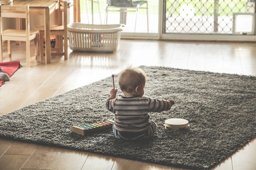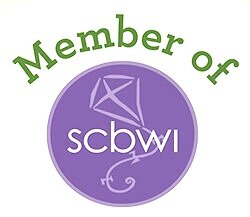You can sing or make up rhythms anywhere, anytime, but today we’ll talk about some ideas for having a regular music time at home. Some of my preschool families have been asking for ideas for a music class at home so in this, 2-part series, I plan to cover some of the basics to get you started.
You don’t have to be living through a pandemic to enjoy music with your young child, but music is a great way for you to enjoy your time together. You don’t have to be particularly musical or even able to sing on key. In fact, many folk songs that are traditionally used to introduce children to language and culture, are written to be easy to sing as they also introduce children (and adults) to music basics. They are a good starting place for adults who want to learn to sing. Children's songs from most cultural backgrounds are beneficial in multiple ways. You can find many resources online, but in general singing a simple song you know from your childhood, without a recording is best. You can alternate that with recordings to sing or dance to.
It doesn’t have to be all nursery rhymes and children’s songs. Share the music you love with your child; Pop, Rock, Broadway, Classical. Do watch out for inappropriate language. Other than that share music that brings you joy or comfort. Your child will respond best to music that you obviously love. Dance with a scarf or piece of cloth. Move slow or fast depending on the music. It is a good idea to alternate slow and fast songs. If you hear the musical pitches going high you can dance up on your tippy toes. Likewise, if the songs have low tones your child can see how low to the ground you can get and still sway or dance. If you dance to a piece like "Aquarium" by Saint-Saëns (link below), how many ocean creatures can you move like? Can you move like seaweed? https://www.youtube.com/watch?v=YVpl-RNzdE4
Saint-Saëns has a whole "Carnival of Animals" for you to listen to and choose from.
Most music has 3 (like a waltz) or 4 beats to a measure. A march may be in 2. If you play a march – get up and march to it counting; 1, 2, 1, 2 1, 2, on the beats. For a waltz it’s fun to have your child dance with a friend (a doll or stuffed animal works well). Most waltzes emphasize the first beat so when you and your child dance, start by saying (and moving) Down, Up, Up. It’s a strong first step followed by 2 light steps. Waltzing is fun and a great way to introduce some internationally famous classical music. You can find many on line. Here is a site with several… https://www.youtube.com/watch?v=FaxTRX9oAV4
If you have a few simple instruments you can keep in one place for music time that’s great. Perhaps you have a drum, rhythm sticks, shakers, but honestly instruments are all around you. You can drum on your legs or tummy. Keeping rhythm by clapping, walking, or stomping helps children build internal rhythm. You can make shakers out of any small container and get different sounds depending on what’s inside. For example, toilet paper rolls taped closed on both ends can be filled with pebbles, rice, corn, acorns, plastic beads…each of which make a different sound. The kitchen is full of safe items that make great sounds. Sound exploration is wonderful for developing minds.
Watch for Music at Home part 2 coming soon with a sample 20-minute music session for you and your child!


